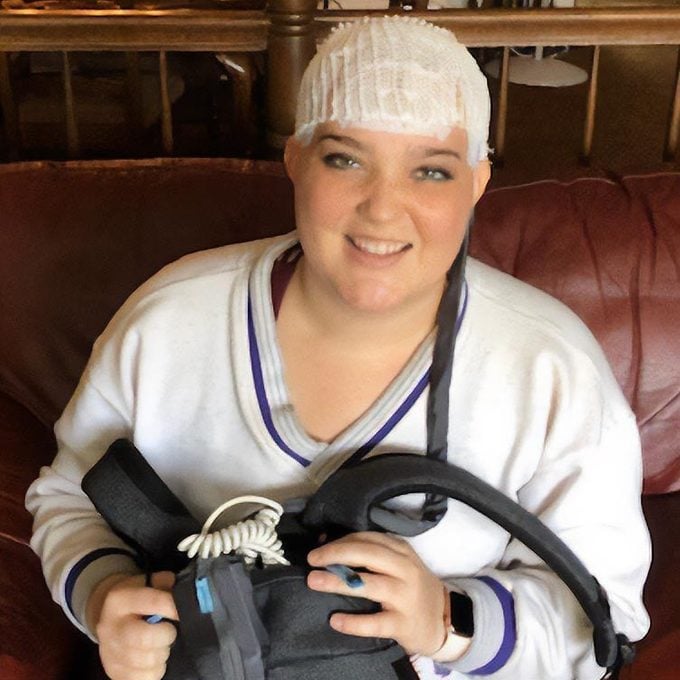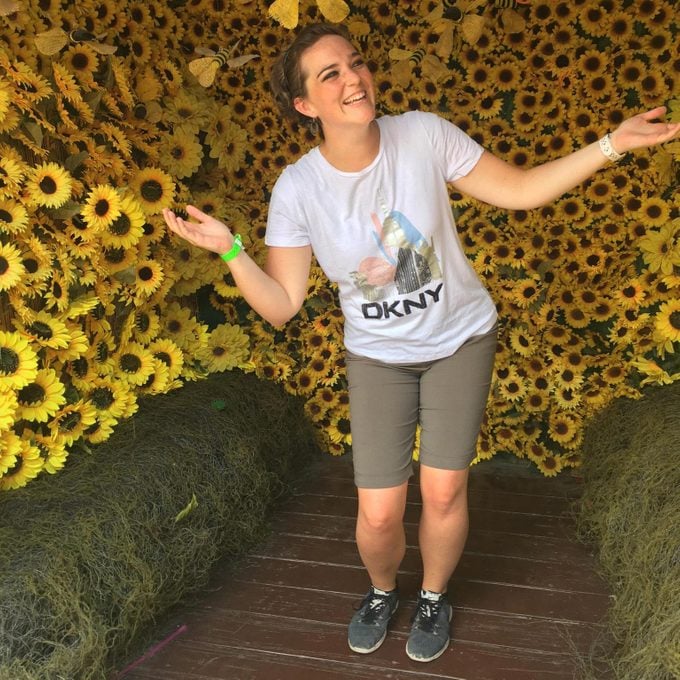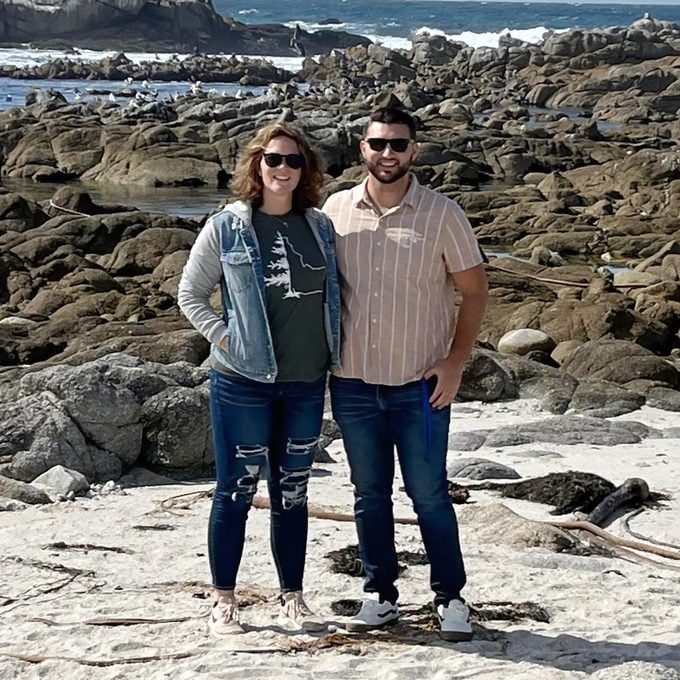“Here’s How I Knew I Had a Brain Tumor”: One Survivor’s Story After a Common Complaint Became Too Much
Updated: Jul. 19, 2024

If you've ever had that question—Is this headache a sign of something serious?—a patient's story and a neurologist's expertise reveal signs it's time to seek medical testing.
Glioblastoma is reported to be the most common and aggressive form of brain cancer. While other cancers can metastasize, which means they spread to other parts of the body, glioblastoma starts in the brain and stays there. According to Jose Carrillo, MD, a board-certified neurologist and neuro-oncologist at Pacific Neuroscience Institute and Associate Professor of Neurology at the Saint John’s Cancer Institute at Providence Saint John’s Health Center in Santa Monica, CA, glioblastoma can occur in any part of the brain and can be very fast-growing.
This means the survival rate for glioblastoma is low: Data suggest fewer than 7% of patients live past five years, and 1% live past 10 years. “This is one of those cancers that even cancer docs will say, ‘That’s a bad one’,” Dr. Carrillo says. “There is no known cure. These tumors invariably recur after treatment.”
How do you know if you have a brain tumor of this kind? Dr. Carillo says in the earliest stages there are usually no symptoms, but as the mass grows, it will put pressure on the brain tissue around it. The symptoms will vary depending where in the brain the tumor is located—but generally speaking, patients experience severe headaches, nausea, weakness, slurred speech, balance problems, and eventually seizures, he explains.
But wait: Aren’t headaches a symptom of a lot of crummy conditions, like pre-menstrual syndrome and the flu? Dr. Carillo says this on discerning when a headache symptom is more serious. “What we tell people is:
- if you’ve never had headaches before and suddenly you’re getting severe headaches;
- if the headaches are suddenly increasing in intensity and frequency, beyond your ‘normal’;
- or if your headaches are combined with any other new, unusual symptoms,
then it’s time to call your doctor,” he says.
8 Silent Signs You Could Have a Brain Tumor
Bailey Roquemore Stutz, 29, is one of these patients who discovered she had a brain tumor after going to see a doctor for what she thought were migraines. Here’s Bailey’s story of strength and living fully.

How I knew I had a brain tumor
By Bailey Roquemore Stutz, as told to Charlotte Hilton Andersen
I should have died four years ago—that is, if you believe the statistics for the very aggressive type of brain cancer I have. I don’t believe them, though. If I’ve learned one thing through my battle with glioblastoma, it’s that thinking negatively gets me nowhere but depressed. There are miracles everywhere.
Miracle #1: Getting my “migraine” diagnosed as a brain tumor
In 2019 I was 25 years old, trying to figure out what I wanted to do with the rest of my life. I am a certified physical therapy assistant and thought it might be fun to work as a traveling assistant—I’d make more money and get to see the country. Strangely though, the job opportunity I’d found kept falling through. It would seem like everything was lined up, and then another issue would surface. I was getting frustrated, so when I started to have headaches, I just chalked them up to stress.
Yet despite trying everything from caffeine to my mom’s prescription migraine pills, the headaches just kept getting worse—to the point where I would wake up in the middle of the night due to the crushing pain. As time passed, the headaches brought blurry vision and light-headedness with them. Those worried me too, but I assumed they were side effects of the migraines.
One day I couldn’t take it anymore. I asked my dad to take me to urgent care. There, the doctor agreed that I was probably just having migraines…but then a thought came to me: I should mention my uncle, who died 10 years ago from a glioblastoma multiforme brain tumor. We were told that my uncle’s type of brain tumor is not normally hereditary, and it would be incredibly rare for someone my age to get it. Fortunately, the doctor ordered an MRI just to be on the safe side. “Don’t worry,” my dad tried to assure me as we waited for the results of the imaging. “It’s just a precaution, I’m sure it will be fine.”
Ten minutes later, the doctor came in. “There’s something we need to see better,” he said, and gave me an injection of contrast dye to help the images show up more clearly.
They found three lesions. The doctor told me to go directly to the emergency room where they would admit me for more testing. Still, no one had said the words “brain cancer” yet. There are lots of things that could cause brain lesions, I was told, including toxoplasmosis, an infection you can get from cats—and I had a cat!
After a week of every test imaginable to rule out any other possibility—including a brain biopsy—I had my diagnosis. It wasn’t a disease from the cat I adored. I had a frontal lobe glioblastoma multiforme grade 4—that’s medical speak for “really darn big brain tumor.”
How a Routine Eye Exam Revealed This Boy’s Brain Tumor
Miracle #2: Surviving one year

Glioblastoma multiforme is the most common type of malignant brain tumor in adults. It’s also the most aggressive type, making it the most lethal. I would soon learn that fewer than 1% of all glioblastoma multiforme patients live for more than 10 years. Due to the size of my tumor, they gave me less than a year to live. That sent a chill down my spine. My beloved uncle only made it one year after his diagnosis.
I won’t lie: The statistics scared me. I asked my father and cousin (my uncle’s son) to give me a blessing—a prayer that we practice in our church to give hope and healing to people suffering from any kind of illness. I’ve always found strength and comfort in my faith, and as soon as they put their hands on my head, I felt an immense feeling of peace. I wasn’t going to die. I knew it.
My doctors sure didn’t, though. They did everything they could to “manage” my expectations, trying to keep me from becoming too hopeful. But I would need all the positivity and hope I could get as I started my treatments. At first it was chemotherapy combined with radiation, but my body didn’t tolerate the chemo. So then it was only high-dose radiation—a really brutal, devastating form of radiation. Basically the whole goal was to kill all the growing cells in my body and hope that the tumor cells would die before the rest of me did. Thankfully my parents were with me every step of the way and they believed 100% in my strength and courage to beat my illness!
At the end of treatment, I told them I still knew I was going to be OK. The doctors were skeptical…but sure enough, the next MRI showed that the radiation had helped. The tumor was shrinking.
Next I tried therapy administered with an Optune, an advanced technology that uses a net of electrical wires on the head to pulse low-intensity, alternating electrical fields through the brain. It isn’t a cure but can temporarily “pause” the growth of the tumor. I responded well to that treatment, but the downside is you have to shave your entire head to use it. I spent six months totally bald.
It was worth it. By January of 2020 I’d made so much progress that I decided to stop treatment. My tumor wasn’t gone and I wasn’t “cured,” but it was small enough that it was no longer causing me any symptoms.
7 Scary Cancers You Can Help Prevent Just By Exercising
Miracle #3: My hair grew back in time for my wedding
For the next three years, my routine MRIs showed the tumor shrinking steadily. During that time, I moved to the Dallas/Fort Worth area, furthered my career and met my husband Braden through a church group.
We got married in January 2022. It was the happiest day of my life and made all the past struggles worth it to get to that moment. No matter what happens next, I will always have that moment with my husband to keep in my heart.
7 Cancers that Are Notoriously Tricky to Detect Early
Miracle #4: My undying spirit

Braden and I enjoyed a blissful, carefree first year of marriage until July of 2023, when a routine MRI showed tumor growth. I had not experienced any new symptoms, so it was not a happy surprise. It was decided I would try proton therapy—another miracle, because the place I’d happened to relocate was one of the few cities in the country where it’s available!
Proton therapy reduced my tumor, but the side effects were horrendous. I was constantly nauseated and vomiting, had brain fog, exhaustion and (my least favorite part) incontinence. I wet myself in public places, more than once.
After that, I was put on Avastin, which has already shrunk the tumor a substantial amount with far fewer side effects. I received my first course of treatment in October 2023 and am in the middle of my second course, as of the time of this publication.
Learning my brain tumor was growing again was a blow, but I refuse to let it drag me back into despair. I’m not sure what the future holds—but I remain positive and optimistic, doing everything I can to stay as healthy and happy as I can. I combine my Western medical treatments with holistic treatments like acupuncture, diet, meditation, therapy, and working on my mind-body connection. During one session I had an incredible realization that I had always seen my body as my enemy, and that this cancer was feeding on that negativity. So I apologized to my body and even started crying as I hugged myself. Learning to see my body not as something betraying me, but as my best friend, has been life-changing.
My upbeat attitude still baffles my doctors a little, especially in the face of this latest setback. But if I could tell people one thing about finding out I had brain cancer, it would be this: No matter what you’re struggling with, keep faith that everything will work out exactly as it should. That positive attitude doesn’t take away the pain or the disease, but it does give you hope. And hope is everything.
The Avastin is helping. My parents and family are my biggest support group. Braden and I just celebrated our second wedding anniversary. Life is good.
For more wellness updates, subscribe to The Healthy by Reader’s Digest newsletter and follow The Healthy on Facebook and Instagram. Keep reading:
- “Here’s How I Knew I Had Colon Cancer”: One Survivor’s Story After a Single, Subtle Symptom
- “Here’s How I Knew I Had Cervical Cancer”: One Survivor’s Story of Discovering Unexpected Symptoms
- Do Wireless Earbuds Harm Your Brain? A Brain Cancer Doctor Sounds Off
- New Study: An Old-School Remedy Shows Impressive Promise at Preventing Serious COVID Infection




















